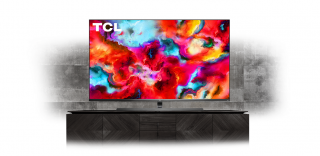The Secret Is Out: How TCL Makes Some of the World’s Best 4K & 8K HDTVs For Such Insanely Low Prices
There are a few things you need to know about these amazing TV sets before you buy.
As someone who is a fan of TCL TV technology and who owns a 2018 6 series model—and they are many of us, considering strong sales and countless positive consumer reviews that seem to get posted daily—I have often wondered how TCL and make such sophisticated TVs at such low prices.
When TCL seemed to make major strides in getting consumer and tech pros into its brand back in 2018, it was on the strength of the 6 series set—a 4K HDTV that combined a then $599.95 price point, HDR picture and the always impressive Roku platform. That was a powerful combination that I, and many others, could not resist. Many experts agreed: unless you wanted to spend hundreds more on a QLED or OLED TV, this was the TV to buy.
And now, TCL has stepped up its game again. In late 2019, TCL dropped a new batch of 6 series TVs that include impressive QLED technology—all for an insane price point, hundreds of dollars less than a comparable Samsung TV. Even more amazing, TCL launched a new 8 series line of TVs that not only include QLED, but mini-LED technology that has many comparing these sets to OLED panels. Moreover, this new series was also sold at insane price that no one else is offering.
That’s all pretty impressive. But how does TCL do it? How can this company offer such amazing technology at such low prices? Well, I would theorize that they must be getting some help, in someway. That help most likely is coming from the Chinese government, who has some very interesting connections to TCL.
Specifically, TCL and Hisense are Chinese government state-owned enterprises (SOEs) under the control of, respectively, the Qingdao and Guangdong governments. Given these connections, it would make sense that they are getting some sort of large government support that helps pay for research and development costs or for costs in other areas that help undercut the competition.
Well, the answers were easy to find. Just a simple google search reveals that TCL has been getting Chinese government subsidies for a long period of time. Nearly 10 years ago, Bloomberg reported that in 2010 TCL was getting 210 million yuan in subsidies from the city of Shenzhen, on top of past subsidies of 341.8 million yuan in the past. Also, in 2013 TCL received over $2 billion in government aid and another $1 billion from the Chinese government, according to various reports. In 2015, another billion dollars plus of aid was granted with other subsidies flowing in future years. Finally, at the end of last year, Nikkei reported on how this practice had been continued.
To be fair, none of this should be a shock, as state subsidies of important Chinese technology companies are now fairly routine. China, in many respects, is quite open about it, and designed such assistance to be part of a larger goal. For years now, China has given hundreds of billions of dollars of illegal subsidies to domestic industries to try and dominate the future of the global economy. Named Made in China 2025, this initiative was designed to ensure that China’s electric cars, solar panels, 5G equipment and artificial intelligence technologies not only dominate the Chinese domestic market, but the entire globe. So, what the Chinese government did for TCL was all part of a larger strategy to ensure its technology was not only among the world’s best—but year by year, among the best and most dominant in their industry. But none of this is obviously fair, and such subsidies are illegal under WTO rules, something the Trump Administration has focused on during recent trade negotiations.
Now, to be honest, it’s hard to know exactly how much of an edge these subsidies have given TCL, but it seems certain low prices and subsidies R&D are just the beginning. With TCL acquiring brands like Alcatel, Palm, Thomson and others, TCL is now the world’s third-largest LCD manufacturer. And with 2020 looking like it will be a banner year for the company, one has to at least wonder how much the Chinese government played a role in that success. Consumers around the world should consider these things when they make that next big TV purchase, especially as the Super Bowl approaches.
Harry J. Kazianis is a Senior Director at the Center for the National Interest. His work and ideas have appeared in The New York Times, The Washington Post, CNN, Fox News, CNBC, USA Today, The Week, The Hill, the American Conservative and many other outlets across the political spectrum. Harry enjoys writing about technology issues and products from a real-world perspective. You can follow him (or yell at him) on Twitter: @Grecianformula.
Image: TCL.

